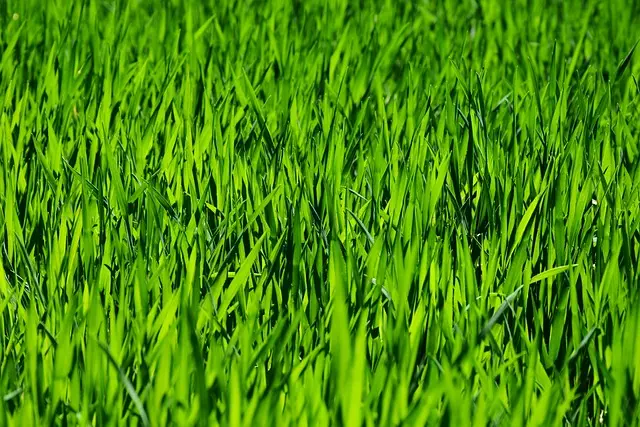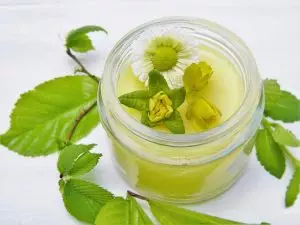Lawn Care and Landscaping are crucial for enhancing property aesthetics and promoting environmental health. A tailored lawn maintenance regimen, including precise fertilization based on grass type—whether it's cool-season or warm-season—is necessary to maintain turf vitality. Fertilizers should be carefully timed and applied according to soil pH and the specific nutritional needs of your turf for optimal growth, resilience, and density. Utilizing a balanced N-P-K fertilizer supports healthy foliage and robust root systems, which in turn improve disease resistance and overall grass vigor. Expert Lawn Care and Landscaping recommendations emphasize personalized care considering local climate, soil type, and unique lawn challenges for the best outcomes. Weed control is another key component, achieved through both pre-emergent and post-emergent herbicides to maintain a weed-free landscape year-round. Regular mowing at the right height for your grass variety, combined with proper irrigation and aeration practices, further supports soil health and deterrents weed invasion, contributing to a thriving lawn through effective Lawn Care and Landscaping practices.
Maintaining a lush, healthy lawn requires more than just mowing and watering; it involves a strategic approach to lawn fertilization and weed control that enhances overall landscaping. This article delves into the nuances of optimal lawn care, offering insights on essential nutrient applications for vigorous growth, effective weed management techniques, and integrating these practices with landscaping design for a visually appealing and thriving outdoor space. Join us as we explore the intricacies of lawn fertilization and strategic weed control to elevate your lawn care and landscaping efforts.
- Understanding Lawn Fertilization: Essentials for Optimal Growth
- Strategic Weed Control: Methods and Best Practices for a Flourishing Lawn
- Integrating Landscaping with Effective Fertilization and Weed Management Techniques
Understanding Lawn Fertilization: Essentials for Optimal Growth

A well-maintained lawn not only enhances the aesthetic appeal of your property but also contributes to a healthier environment. Lawn Care and Landscaping practices, including fertilization, are crucial for promoting optimal growth and resilience in your turf grass. Understanding the nutritional needs of your specific grass type is fundamental to effective lawn care. Most cool-season grasses thrive with fall and spring fertilizations, while warm-season grasses benefit from applications during late spring and early fall. The choice of fertilizer should be based on the composition that best suits your soil’s pH level and the nutrient needs of your lawn.
A balanced N-P-K (Nitrogen, Phosphorus, Potassium) ratio in a fertilizer can stimulate leaf growth, root development, disease resistance, and overall turf density. It’s important to follow the recommended rates and timing specific to your region and grass type to avoid nutrient imbalances or over-fertilization. Additionally, proper lawn care includes integrating weed control measures to prevent invasive species from competing with your grass. A pre-emergent herbicide can be applied before weeds germinate, while a post-emergent treatment is used for existing weeds. Lawn Care and Landscaping professionals often recommend a tailored approach, considering factors like soil type, climate, and the specific challenges of your lawn. By adhering to these principles, you can ensure a lush, green, and thriving landscape throughout the year.
Strategic Weed Control: Methods and Best Practices for a Flourishing Lawn

A thriving lawn is a blend of meticulous lawn care practices, including strategic weed control to maintain its lush appearance and health throughout the year. Effective weed management begins with understanding the types of weeds prevalent in the region and their life cycles. Common broadleaf weeds like dandelions and clover, as well as grassy weeds like crabgrass, each require specific control measures. Pre-emergent herbicides applied during early spring and fall can prevent weed seeds from germinating, thus protecting the lawn’s integrity. Post-emergent treatments are necessary for established weeds and should be chosen based on the type of weed and the grass species present in the lawn to avoid turf damage.
Integrating a comprehensive approach to lawn care and landscaping is essential for long-term success. This involves selecting the right fertilizer, understanding its timing, and applying it correctly to support grass growth and resilience. A balanced diet with proper nutrients ensures that the lawn’s roots are robust enough to compete effectively with weeds for resources. Additionally, maintaining optimal soil pH levels is crucial as it affects nutrient availability and can influence weed prevalence. Regular mowing at the correct height for the grass type also contributes to a healthy lawn by discouraging weed invasion and promoting a dense, vigorous turf that outcompetes weeds naturally. Landscaping practices, such as proper irrigation and aeration, complement these efforts, ensuring that the soil remains loose and well-drained, allowing roots to grow deeper and stronger, further deterring weed encroachment.
Integrating Landscaping with Effective Fertilization and Weed Management Techniques

Maintaining a lush, healthy lawn requires a strategic approach that combines effective landscaping practices with targeted fertilization and weed management techniques. A well-designed landscape serves as the foundation for a thriving lawn, where careful selection of plant species, thoughtful layout, and efficient irrigation systems support the overall health of the turf. Integrating these elements ensures that your lawn not only looks aesthetically pleasing but also remains resilient against invasive weeds and pests.
Fertilization is a cornerstone of lawn care and landscaping, providing the necessary nutrients to promote vigorous growth and maintain soil health. A balanced fertilization program tailored to local soil conditions and climate can help your grass outcompete weeds naturally. Similarly, an informed weed control strategy that includes both pre-emergence and post-emergence treatments is essential for maintaining a pristine lawn. By staying vigilant and applying these controls at the right time, you can protect your landscape investment and enjoy a uniformly green, healthy lawn throughout the growing season.
Lawn Care and Landscaping professionals agree that a healthy, lush lawn is a cornerstone of beautiful garden design. The key to achieving this lies in a deep understanding of lawn fertilization and strategic weed control. As outlined in our discussion, optimal growth begins with tailored fertilization schedules, which cater to local soil conditions and climate factors. Similarly, effective weed management requires a proactive approach, combining both preventative measures and targeted treatments to ensure these unwanted plants don’t overtake your lawn. Integrating these practices seamlessly with landscaping efforts not only enhances the aesthetic appeal but also fosters a more resilient and sustainable outdoor environment. By adhering to the best practices detailed in ‘Understanding Lawn Fertilization: Essentials for Optimal Growth’ and ‘Strategic Weed Control: Methods and Best Practices for a Flourishing Lawn,’ homeowners can maintain a pristine lawn that stands as a testament to their dedication to landscaping.
